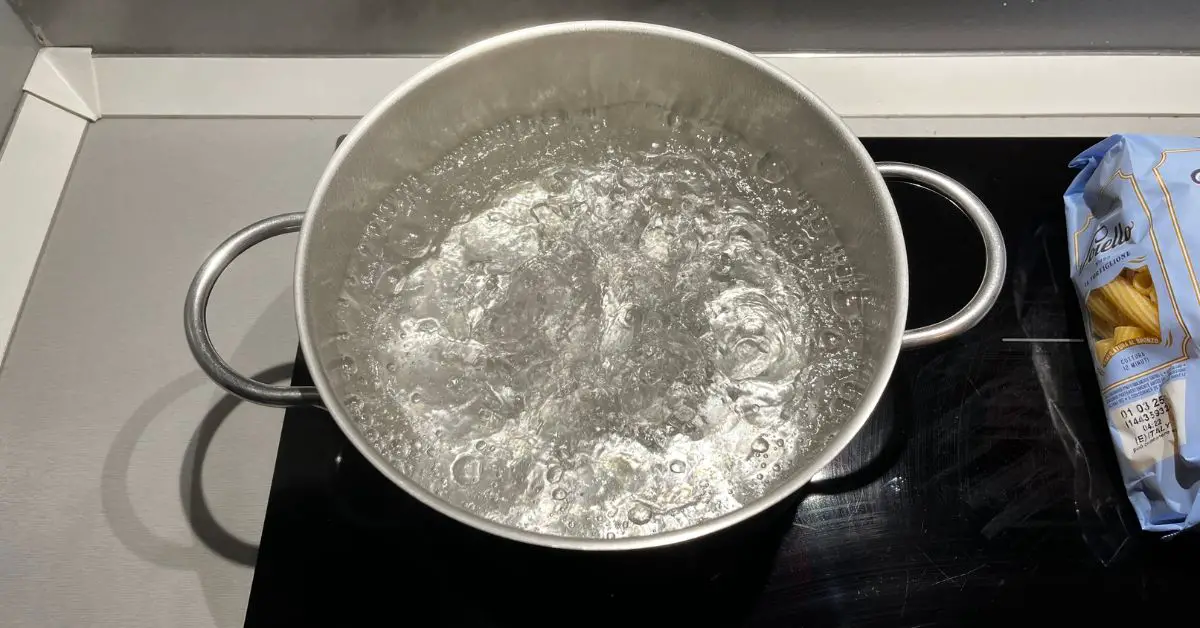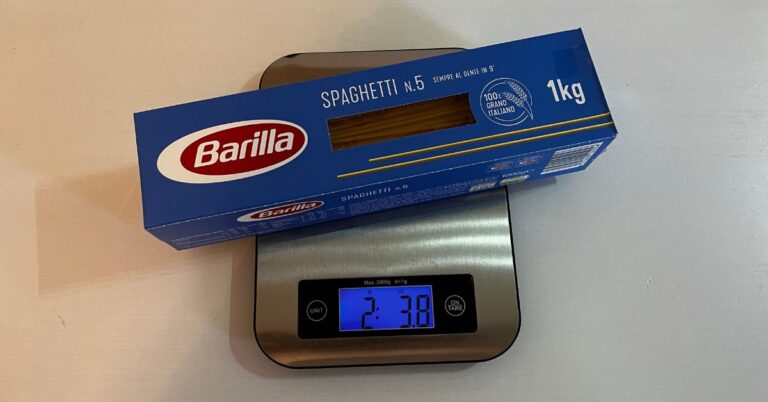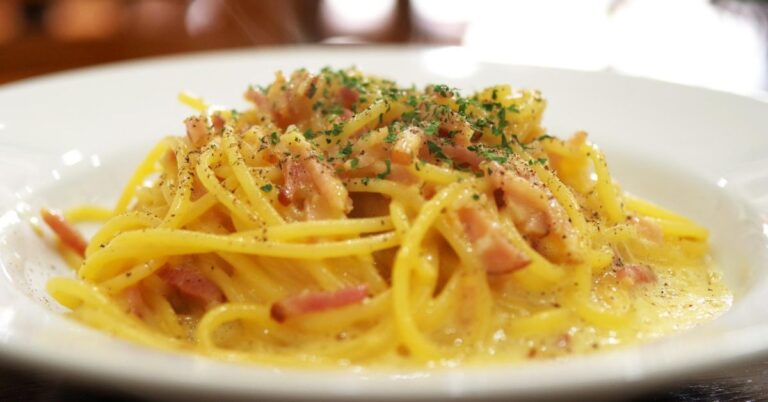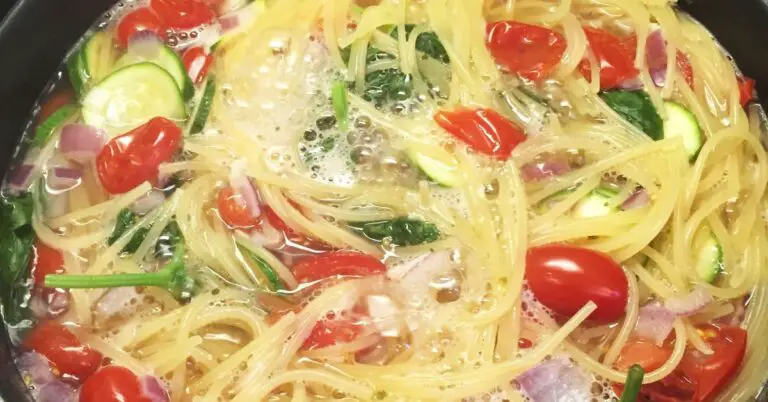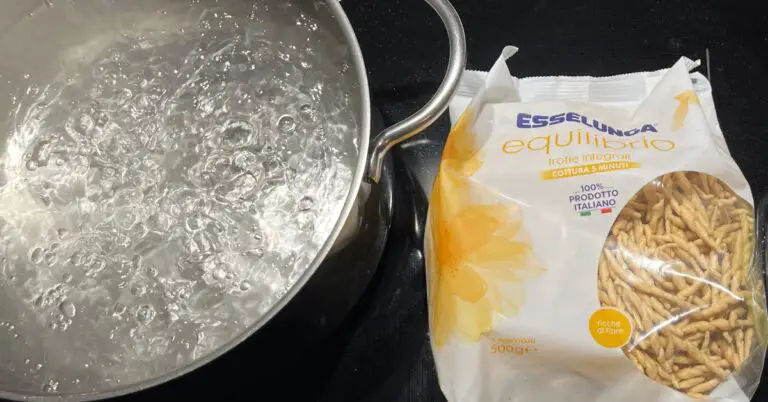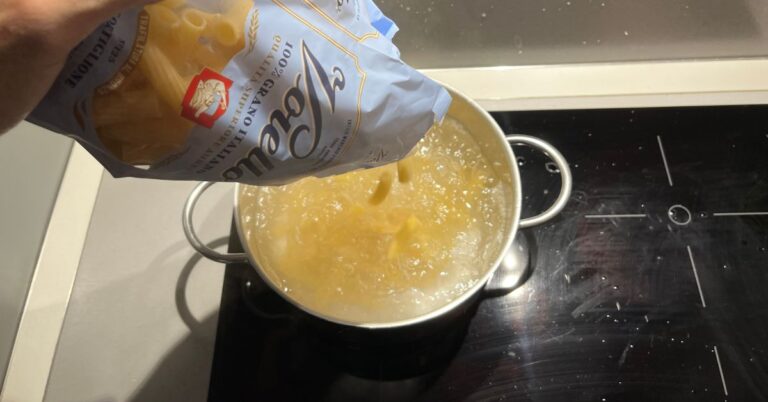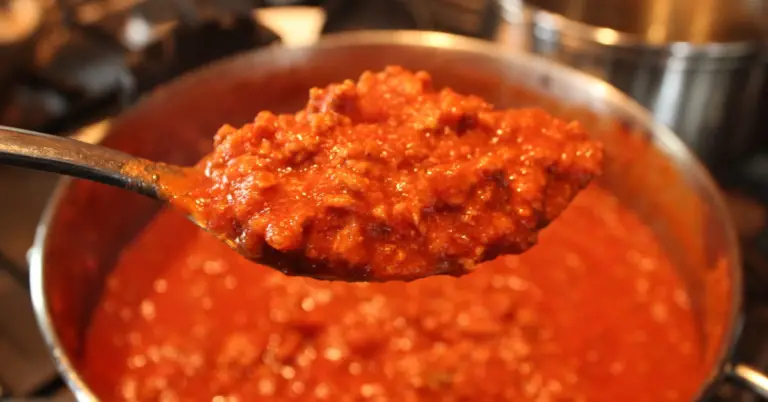To explain how to cook pasta flawlessly, we need to understand the issue: how much water do we have to use in the pot?
So let’s get to the point and see how much water is needed to cook pasta and how important the size of the pot we use is.
The ratio between the amount of water and the amount of pasta is essential for the success of cooking and, therefore, also the pot size you will use. Let’s not forget the salt, its weight also varies based on the amount of pasta you want to cook.
Correct amounts of water and salt to be used for cooking pasta
There is a general rule that we use in Italy: to cook 100 grams of pasta, you need 1 liter of water and 1 teaspoon of coarse salt.
100 grams of pasta = 1 liter of water + 1 teaspoon of coarse salt
If you need to increase the grams of pasta (actually who the hell eats only 100 grams of pasta?), rise the liters of water accordingly and obviously the salt, like this:
200 grams of pasta = 2 liters of water + 2 teaspoons coarse salt
300 grams of pasta = 3 liters of water + 3 teaspoons of coarse salt
400 grams of pasta = 4 liters of water + 4 teaspoons of coarse salt
500 grams of pasta = 5 liters of water + 5 teaspoons of coarse salt
Below there is a table with the various different units of measurement for pasta and water.
| Pasta Quantity (g) | Pasta Quantity (oz) | Pasta Quantity (lb) | Pasta Quantity (cup) | Water Quantity (L) | Water Quantity (qt) | Water Quantity (gal) | Water Quantity (oz) |
| 100 | 3.53 | 0.22 | 0.42 | 1 | 1.06 | 0.26 | 34.21 |
| 200 | 7.05 | 0.44 | 1.24 | 2 | 2.11 | 0.53 | 68.03 |
| 300 | 10.58 | 1.06 | 1.26 | 3 | 3.17 | 1.19 | 101.44 |
| 400 | 14.11 | 1.28 | 2.08 | 4 | 4.23 | 1.06 | 135.26 |
| 500 | 18.04 | 1.10 | 2.10 | 5 | 5.28 | 1.32 | 169.07 |
| 600 | 21.16 | 1.32 | 2.52 | 6 | 6.34 | 1.58 | 203.28 |
| 700 | 25.09 | 1.54 | 3.34 | 7 | 7.40 | 2.25 | 237.10 |
| 800 | 28.22 | 2.16 | 3.36 | 8 | 8.45 | 2.11 | 270.51 |
| 900 | 32.15 | 2.38 | 4.18 | 9 | 9.51 | 2.37 | 304.33 |
| 1000 | 35.27 | 2.20 | 4.20 | 10 | 10.57 | 3.04 | 338.14 |
At this point, you are getting a general picture of the proportions, you can continue here to see the full process of cooking the perfect pasta. . You are surely wondering why we use so much water to cook pasta, right?
The reasons are numerous:
- Lots of water manages to accumulate enough heat to quickly return to the boil once the pasta is tossed;
- The more water there is, the more the pasta moves freely inside the pot, thus avoiding sticking to the pot;
- The more water is there, the more it cooks without becoming gluey;
- Good quality pasta takes a long time to cook; part of the water evaporates during the cooking phase, if it is too little the cooking will be clumpy.
What we need to learn immediately afterward is that the type of water used can also play a very important role. When we are at home, obviously, we prefer the tap one but, if it turns out to be particularly calcareous (and it is easy to notice from the halos that it leaves on pots), we tend to prefer filtered water (through domestic systems or jugs) or packaged in order to improve cooking.
As a matter of fact, limestone is nothing more than a mineral (combined with other substances) that can block the complete rehydration of the pasta and weaken or even stop the boiling, ruining the result of perfect cooking.
This is a piece of the puzzle, which is essential and that all professionals in the sector take into account: pasta is always cooked with the most suitable water in restaurants in order to maximize the result.
Water for pasta: common mistakes and useful tips
It happened to me to watch some videos in which cold water and pasta were put in the pot at the same time: this is a method that may appear quick or practical, but I assure you, that it only leads to mushy, overcooked and sticky pasta.
In other cases, someone had the brilliant idea of putting hot water on the stove; water which has passed through the heating systems before arriving in the pot, carrying with it all the limestone that usually tends to accumulate on that type of pipe. Let’s not talk about water heaters and several boilers which can become a nightmare because of the contamination by heavy metals and bacteria.
So, no hot water from the tap to cook the pasta and save time. Only pour water at room temperature into the pot, and let the stove do its own job to bring the water to boil.
The right procedure is quite simple: the pot must be filled with cold water and put on the fire, waiting for it to boil. At that point, we have to add salt which, generally, can slow down the boiling for a moment; finally, the pasta is poured, waiting for the right time for cooking (as shown on the package).
And, if you are afraid to get distracted, you can always set a timer! My advice is to set it a couple of minutes before the real recommended cooking time in order to be able to check the cooking a little in advance.
On the other hand, pasta should be turned several times to prevent it from sticking to the pan’s bottom or, worse, the macaroni from sticking together: so, you do not have so many opportunities to get distracted, but it is absolutely worth keeping attention alive for only 6-7 minutes!
A tip: in order to boil water quickly, a lid can be very useful, which also prevents massive evaporation; while cooking the pasta, on the other hand, you can continue with the pot uncovered (and over high heat).
The right Pot for cooking pasta flawlessly
Last but not least, the pot issue. How to organize yourself among terracotta pans, casseroles and steel containers?
Stainless steel Stock Pot are among the best for cooking pasta because they offer optimal containment capacity and resistance to wear and rust, ensuring uniform heat distribution throughout the pot’s body.
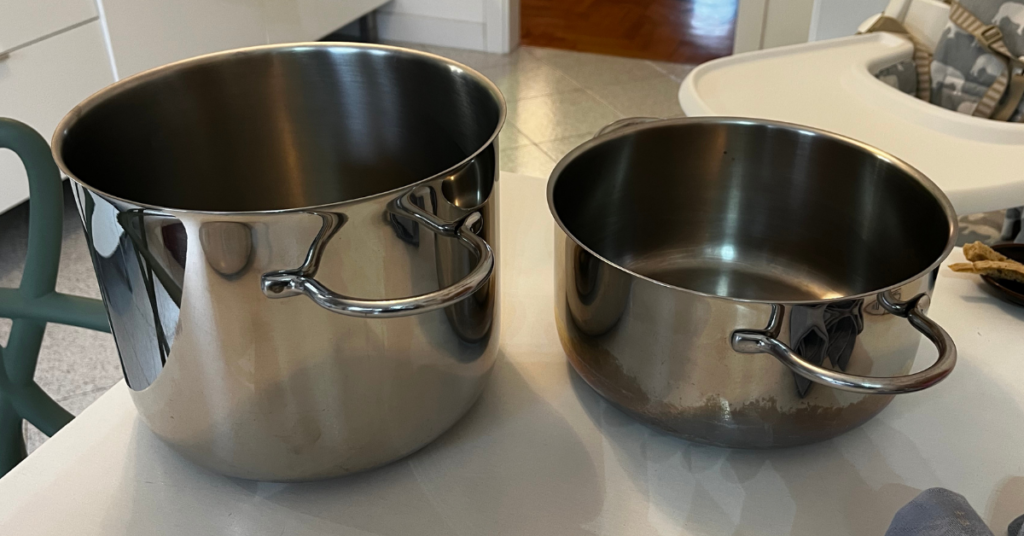
You’ll need a pot that must be chosen in consideration of the amount of water needed to fill it but also the pasta shape to be cooked. If you want to cook short pasta, such as penne, it is advisable to choose a large pot with lower sides, while if you want to cook long pasta like spaghetti or bucatini, you will need a large pot but with higher edges.
I don’t recommend using pans to cook pasta, so Saucier Pan, Suace Pan, Saute Pan, are all too shallow or small to hold the right proportion of pasta and water.
Basically, the pans are intended only for cooking gnocchi or some particular recipes: when keeping what is cooked warm for a long time is more than essential.
In other cases, you can easily opt for steel pots (deeper Stock Pots) and casseroles (higher than a frying pan), by choosing for one or the other based on the amount of pasta to be cooked.
Considering the proportions I explained to you before, we must not forget that the pasta will have to cook comfortably, leaving the pasta free to float separately without creating dangerous “sticking struggles”.
In addition, since the final part of the preparation often involves intense creaming or, in any case, the combination of the sauce with the pasta, it is important that the tools we use are able to contain everything and give us the opportunity to mix easily.
I truly hope I have answered all your questions and doubts, offering you the best ideas for looking at a plate of pasta with Italian eyes!

